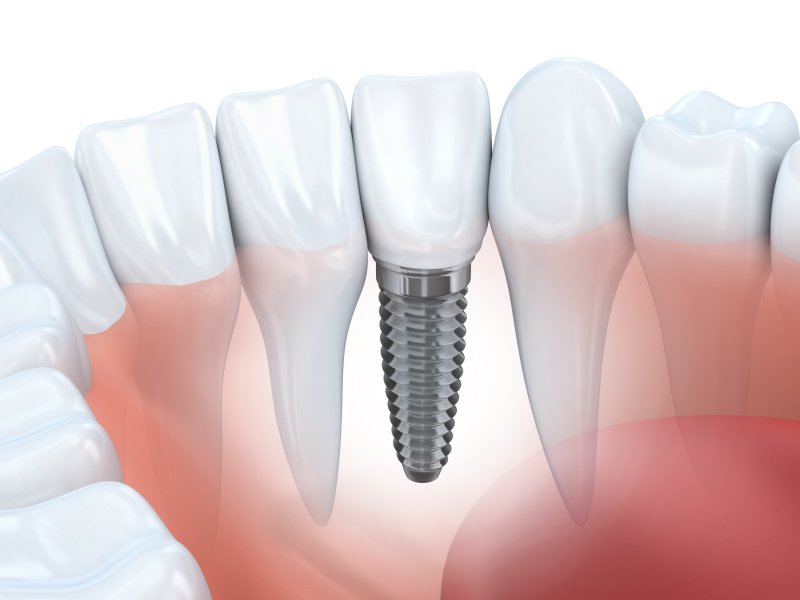
Of the many reasons to choose dental implants to replace missing teeth, one of the biggest is their predictability. The treatment has a 95 percent chance of success, and you can usually expect your implants to last 25 years or more with minimal maintenance. But despite their reliability, implants do sometimes come loose or fail, and it’s important to understand how this happens and what you can do about it. Do you have a loose dental implant? Here’s what you need to know.
Why Do Dental Implants Come Loose?
If a dental implant comes loose fairly soon after it has been placed in the jaw, it might mean that osseointegration has failed to take place. Osseointegration is the process where bone grows over the surface of the implant and bonds with it, essentially making the implant post a part of your jaw. If osseointegration is unsuccessful, the jaw won’t be able to hold the implant in place, causing it to fail.
In other cases, a loose dental implant might mean you have an infection called peri-implantitis. This occurs when bacteria build up around the implant post and attack the tissue supporting it. Peri-implantitis can strike months or even years after the initial implant surgery, and it’s typically the result of poor oral hygiene.
It should be noted that if a dental implant feels loose, it’s not always a problem with the post itself. Sometimes it just means that the crown or restoration on top of the implant no longer fits properly. A loose restoration can happen for several reasons; it might not have been properly made in the first place, or it could be the result of wear and tear over time.
What Should You Do About a Loose Dental Implant?
No matter what you think caused your loose dental implant, you should make an appointment with your dentist right away. They can narrow down what the issue is so that it can be treated properly. If you simply have a loose restoration, it can be refitted or replaced as necessary. But if the problem lies with the implant and the tissue around it, the next steps depend on how severe the situation is.
An infection around the implant that’s still in its early stages can often be treated without removing the post. But if the infection is severe, or if there’s been significant bone loss around the post, the implant may need to be taken out so that the problem can be addressed. Don’t worry, though; oftentimes you’ll be able to get a new implant once your mouth is healthy again.
Having a loose dental implant is alarming, but acting quickly will let you protect your new smile. Make sure you have your dentist’s number close at hand at all times so that you can make an appointment right away as soon as you think something might be wrong with your implant.
About the Author
Dr. John J. Roberson earned his dental degree from the LSU School of Dentistry, after which he completed a one-year Advanced Education in General Dentistry residency. He treats his patients like family and takes every possible step to make sure they get the care they deserve; that’s why he works with skilled specialists in Monroe who can place long-lasting, reliable dental implants. If you have questions about the implant process or are worried about implant failure, you can make an appointment with Dr. Roberson by visiting his website or calling (318) 343-2633.
